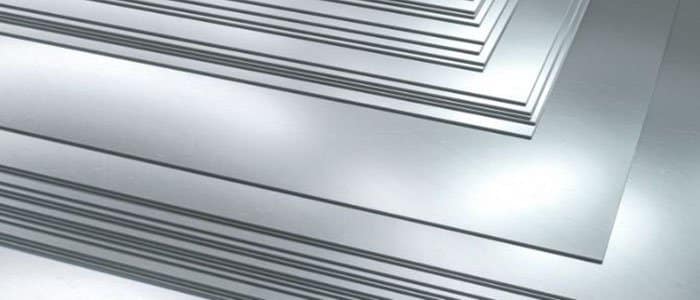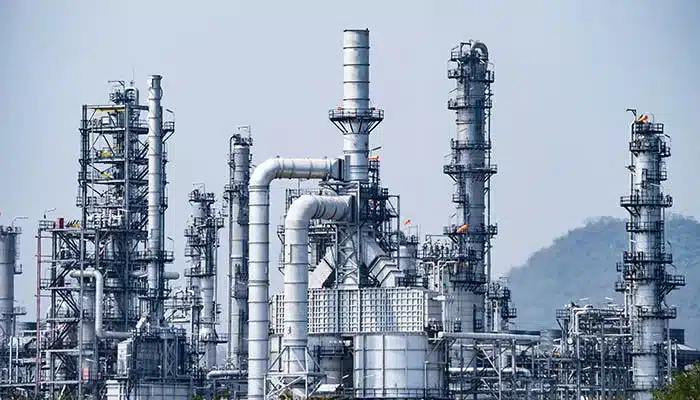Corrosion Protection Mechanisms
Galvanized steel is carbon steel coated with a protective layer of zinc through either hot-dip galvanizing (immersion in molten zinc) or electrogalvanizing (electroplating). Its corrosion defense relies on sacrificial protection: zinc corrodes preferentially when exposed to moisture, salts, or industrial pollutants, shielding the underlying steel. The zinc-iron alloy layers formed during hot-dipping create a metallurgical bond that resists peeling. However, once the zinc coating erodes (typically 20-50 years in harsh environments), the steel substrate rusts rapidly.
Stainless steel is an iron-chromium alloy (minimum 10.5% chromium) with added nickel, molybdenum, or nitrogen for enhanced properties. Its corrosion resistance stems from a self-repairing passive oxide layer (chromium oxide) that forms instantly when exposed to oxygen. This invisible barrier prevents iron oxidation, even when scratched. Unlike galvanized steel, stainless steel doesn’t rely on a coating; its resistance is inherent and regenerative. Grades like 316 (with molybdenum) excel in chloride-rich environments (e.g., marine settings).
Key Differences: Physical & Chemical Properties
| Property | Galvanized Steel | Stainless Steel |
| Base Material | Carbon steel + zinc coating | Iron-chromium alloy (+ Ni, Mo, etc.) |
| Hardness | Moderate (depends on base steel) | High (especially martensitic grades) |
| Weight | Lighter (thin zinc layer) | Heavier (denser alloy) |
| Heat Resistance | Low (zinc melts at 420°C) | High (up to 870°C for austenitic) |
| Magnetic Properties | Magnetic (carbon steel core) | Non-magnetic (austenitic grades) |
| Weldability | Good (requires zinc removal at joints) | Excellent (specialized filler rods) |
Maintenance Requirements and Lifecycle Costs
The long-term economic implications of material selection extend beyond initial purchase price to include maintenance requirements and lifecycle costs.
Galvanized Steel Maintenance
Galvanized steel generally requires minimal maintenance throughout its service life. The zinc coating provides continuous protection without requiring regular inspections or treatments. However, in severe environments, periodic inspections may be necessary to monitor coating integrity. If damage occurs, repair methods include zinc-rich paints, zinc spray metallizing, or welded zinc patches.
The maintenance costs for galvanized steel typically remain low throughout its service life. However, once the zinc coating is consumed, the underlying carbon steel will corrode rapidly, requiring replacement rather than repair. This factor makes galvanized steel particularly suitable for applications with predictable service lives or where replacement is more economical than ongoing maintenance.
Stainless Steel Maintenance
Stainless steel requires even less maintenance than galvanized steel in most applications. The passive layer provides continuous protection without requiring regular treatments. However, in environments with high chloride concentrations or acidic conditions, periodic cleaning may be necessary to remove contaminants that could initiate localized corrosion.
Maintenance costs for stainless steel typically remain minimal throughout its extended service life. Unlike galvanized steel, stainless steel doesn’t have a finite protective layer that can be consumed. Instead, it maintains its corrosion resistance indefinitely in suitable environments, often outlasting the structure it serves. This characteristic makes stainless steel economically advantageous despite its higher initial cost, particularly in applications where longevity and minimal maintenance are priorities.
Application-Specific Suitability
Galvanized Steel excels in:
Structural frameworks (beams, columns) due to cost-efficiency
Outdoor infrastructure (fences, guardrails) where moderate corrosion resistance suffices
Fasteners and piping systems requiring mechanical strength over aesthetics
Stainless Steel dominates in:
Chemical processing equipment (tanks, valves) resisting acids/chlorides
Medical/food-grade tools needing hygiene and non-reactivity
Architectural features (facades, railings) prioritizing longevity and appearance
Critical Selection Factors
Environment:
Galvanized: Best for dry/indoor or mild outdoor settings (e.g., agricultural buildings).
Stainless: Essential for coastal, chemical, or high-humidity environments (e.g., desalination plants).
Aesthetic Requirements:
Galvanized: Visible “spangle” pattern; may weather unevenly.
Stainless: Polished/matte finishes retain appearance for decades.
Structural Demands:
Galvanized: Superior for high-strength, load-bearing applications.
Stainless: Ideal for precision parts requiring corrosion resistance and formability.
Sustainability:
Galvanized: Zinc is recyclable but mining has ecological impacts.
Stainless: 90%+ recycled content; fully recyclable without quality loss.
Conclusion
The choice between galvanized and stainless steel represents a classic engineering trade-off between initial cost and long-term performance. Galvanized steel offers excellent corrosion protection at a lower initial cost, making it suitable for many applications with predictable service lives and moderate environmental exposure. Stainless steel provides superior corrosion resistance, extended service life, and minimal maintenance requirements, justifying its higher initial cost in demanding applications or where longevity is paramount.
With extensive experience in supplying high-quality stainless steel, galvanized steel, and specialty alloys, Daxun Alloys Co., Ltd. stands ready to support your projects with reliable materials, technical expertise, and responsive service. Contact us today to explore how our material solutions can enhance the performance and longevity of your applications.




